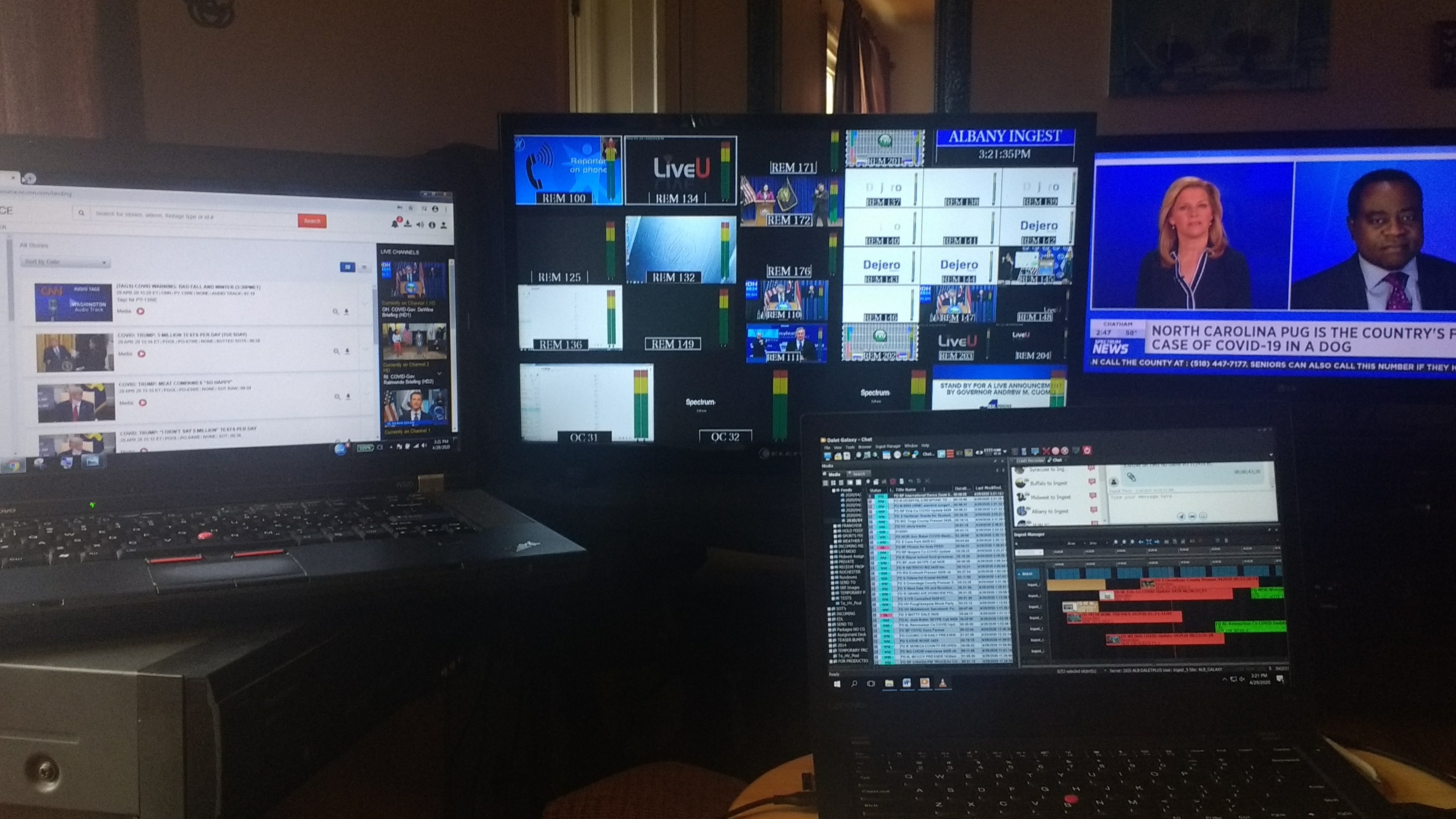
NEW YORK—Like many news organizations grappling with how best to protect employees from COVID-19 while continuing to deliver the local news and information viewers rely upon, Spectrum News has initiated a variety of new practices, but by far the most important has been leveraging the network infrastructure and fiber backbone of parent company Charter Communications to virtualize news operations.
“What we’ve done since the start of this situation in February was really begin to pare down production, news production and distribution and all of the automated functions of a newsroom from a fully staffed site to one in which we virtualize clients and take functions out of the office,” says Joe Truncale, Spectrum Networks group vice president of Operations and Innovation.
Spectrum News operates more than 30 hyperlocal news channels around the country, including NY1 serving New York City, Spectrum Bay News 9 in Tampa, Fla., Spectrum News Austin and Spectrum News North Carolina.
In practice, what Spectrum News’ COVID-19 response means is rather than requiring producers to sit in newsrooms around other workers, producers can access the company’s Virtual Desktop Infrastructure (VDI) to work from home and thereby conform to social distancing norms put in place since the outbreak.
“We’re able not only to move those editorial functions out of the office but also technical ones where at some of our sites we have master control functionality sitting in someone’s home,” he says.
VIRTUALIZED DESKTOP
Over the past few years, Spectrum has built a full virtual environment, says Calvin Lam, Spectrum Networks vice president of IT.
In its first iteration, the goal was to enable Spectrum News hubs to access and manage each other’s infrastructure and network. This allows multiple Spectrum News stations to produce news without building out facilities in each locale. For instance, VDI makes it possible for hyperlocal stations in Ohio, Wisconsin and various upstate New York communities to leverage the resources available in the operation’s Albany, N.Y., hub.
The professional video industry's #1 source for news, trends and product and tech information. Sign up below.
More recently, this type of access and control have been expanded to give producers and other news staff the ability to work from home via Charter’s high-speed access internet modem, says Lam.
“So, basically anywhere within our footprint, they can access and they’ll see their virtual desktop and have the same functionality they have right at the station itself,” he adds.
During the coronavirus outbreak, Spectrum News has rounded out its remote workflow with cloud-based production to enable simple production, adds Truncale.
The organization is using a Dalet newsroom system, Harmonic MediaGrid for production storage and Harmonic Spectrum for playout. “Basically, everybody sits at home and as feeds come in, they see low-res proxies of a feed, such as a press conference feed,” says Lam. “They make their simple edits in their Dalet system, publish those and once they are published, they’re officially stories.”
Latency is minimal between actions done at home and those executed at the hub, adds Truncale.
A few years ago, Spectrum Networks began stress testing the technology needed for this virtualized news model. By late 2018, it was satisfied with the results of its testing and deployed its virtual desktop in Ohio and Wisconsin, says Truncale.
“There was no infrastructure in those locations. They were clients, and they were accessing the infrastructure in Albany to create news,” says Lam. “So with this COVID-19, we already had it, and the workflows were there—it hasn’t been a heavy lift for us in this environment.”
The remote capabilities have proven especially beneficial for Spectrum News operations in those areas of the country hardest hit by the pandemic. “New York State has been hit pretty hard, so there, more people are leaning on this production architecture,” says Truncale. “Our other stations are doing the same, but not to the degree New York has.”
Spectrum News, however, still relies on a technical director and audio technician to produce live newscasts on site, he adds. “Let’s use NY1 as an example. The TD and audio operator sitting at NY1 have multiple functions,” he explains. “The kind of production we have been doing at home is really more limited where employees have an [Blackmagic Design] ATEM switcher that they are controlling along with audio.”
Beyond the Spectrum News producers using the Virtual Desktop Infrastructure to work from home, other key news personnel are working remotely, says Truncale.
PLUS: WRAL Keeps News Staff, Viewers Connected
While working away from the newsroom is standard operating procedure for Spectrum News multimedia journalists (MMJs), that’s not the case for anchors and meteorologists. Those working at NY1 in the heart of the U.S. outbreak, however, have sheltered in place and are working from home as well.
“These people are creating organic set construction in their houses,” says Truncale. “They are setting up their cameras in front of bookcases and at different locations in their homes. We have a lot of transmission gear sitting in people’s houses.”
For Truncale, post COVID-19 will be the time to reflect on the use of VDI. “We are certainly thinking that we are going to examine our workflow practices [when the virus abates],” he says.
Phil Kurz is a contributing editor to TV Tech. He has written about TV and video technology for more than 30 years and served as editor of three leading industry magazines. He earned a Bachelor of Journalism and a Master’s Degree in Journalism from the University of Missouri-Columbia School of Journalism.

